-
 Bitcoin
Bitcoin $82,939.8540
-1.12% -
 Ethereum
Ethereum $1,790.1968
-1.04% -
 Tether USDt
Tether USDt $0.9996
0.00% -
 XRP
XRP $2.1322
0.32% -
 BNB
BNB $592.4750
-0.76% -
 Solana
Solana $118.3109
-2.85% -
 USDC
USDC $1.0000
0.01% -
 Dogecoin
Dogecoin $0.1683
-1.60% -
 Cardano
Cardano $0.6513
-1.43% -
 TRON
TRON $0.2377
-0.97% -
 UNUS SED LEO
UNUS SED LEO $9.0742
-4.17% -
 Chainlink
Chainlink $12.6773
-1.82% -
 Toncoin
Toncoin $3.3268
-1.48% -
 Stellar
Stellar $0.2503
-3.53% -
 Avalanche
Avalanche $17.8932
-0.77% -
 Shiba Inu
Shiba Inu $0.0...01222
-0.32% -
 Sui
Sui $2.2152
-2.74% -
 Hedera
Hedera $0.1612
-2.25% -
 Litecoin
Litecoin $82.2295
-2.55% -
 Polkadot
Polkadot $3.9361
-3.10% -
 MANTRA
MANTRA $6.2831
-0.04% -
 Bitcoin Cash
Bitcoin Cash $298.7688
-0.22% -
 Dai
Dai $1.0001
0.02% -
 Bitget Token
Bitget Token $4.4367
-2.42% -
 Ethena USDe
Ethena USDe $0.9990
-0.02% -
 Pi
Pi $0.5933
10.29% -
 Monero
Monero $215.1864
-0.04% -
 Hyperliquid
Hyperliquid $11.7309
-0.93% -
 Uniswap
Uniswap $5.8023
-1.26% -
 OKB
OKB $51.5001
6.22%
What is a sidechain? How does it help the main chain share the transaction pressure?
Sidechains, linked to the main blockchain via a two-way peg, enhance scalability and functionality by offloading transactions and enabling new features.
Apr 05, 2025 at 11:00 am
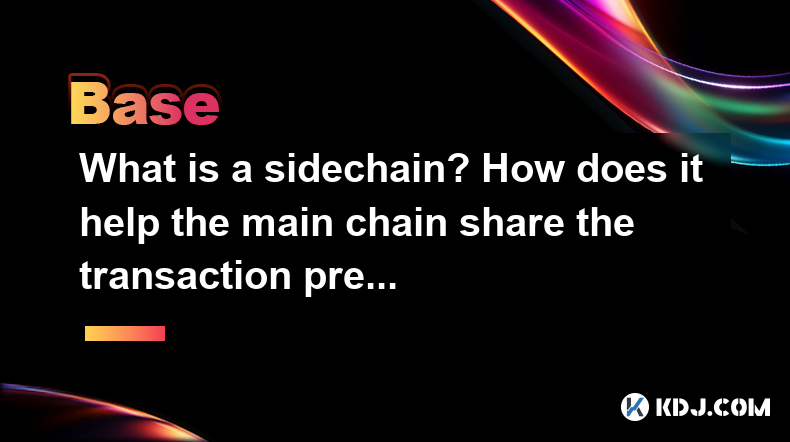
A sidechain is a separate blockchain that is linked to the main blockchain, allowing for the transfer of assets and data between the two chains. Sidechains operate independently but are connected to the main chain through a two-way peg mechanism. This connection enables the main chain to offload some of its transaction processing to the sidechain, thereby reducing congestion and improving scalability.
How Sidechains Work
Sidechains function by creating a secure method to move assets from the main blockchain to the sidechain and back again. This process is facilitated by the two-way peg, which locks assets on the main chain and releases an equivalent amount on the sidechain. Once the user is ready to move the assets back to the main chain, the process is reversed.
For example, if you want to move Bitcoin to a sidechain, you would send your Bitcoin to a specific address on the main Bitcoin blockchain. This action would lock your Bitcoin on the main chain, and an equivalent amount of tokens would be created on the sidechain for you to use. When you're ready to return to the main chain, you would send the tokens back to a designated address on the sidechain, which would then unlock your Bitcoin on the main chain.
Benefits of Sidechains for the Main Chain
One of the primary benefits of sidechains for the main chain is transaction scalability. As the main chain can become congested with a high volume of transactions, sidechains provide an alternative route for processing these transactions. By moving some transactions to a sidechain, the main chain experiences less pressure, which results in faster transaction times and lower fees.
Another advantage is enhanced functionality. Sidechains can be designed with different rules and features that are not possible on the main chain. This flexibility allows developers to experiment with new technologies and features without compromising the integrity of the main chain.
How Sidechains Help Share Transaction Pressure
Sidechains help share transaction pressure by providing an additional layer for processing transactions. When the main chain is overwhelmed with transactions, users can opt to use the sidechain instead. This redistribution of transaction load helps to maintain the efficiency of the main chain.
For instance, if the main chain is processing 1000 transactions per second and reaches its capacity, transactions can be redirected to the sidechain, which can handle an additional 500 transactions per second. This effectively increases the total transaction capacity of the network to 1500 transactions per second.
Implementing a Sidechain
To implement a sidechain, several steps need to be followed:
Design the Sidechain: Determine the specific features and rules that the sidechain will have. This includes deciding on the consensus mechanism, block time, and any additional functionalities.
Develop the Two-Way Peg: Create the mechanism that will lock assets on the main chain and release them on the sidechain. This requires developing smart contracts or other cryptographic methods to ensure the security of the process.
Integrate with the Main Chain: Establish the connection between the sidechain and the main chain. This involves setting up the necessary protocols and interfaces to allow for seamless asset transfer.
Test and Deploy: Conduct thorough testing to ensure the sidechain functions as intended and does not pose any security risks. Once testing is complete, deploy the sidechain and make it available for users.
Examples of Sidechains
Several cryptocurrencies have implemented sidechains to improve their scalability and functionality. Liquid Network is a sidechain developed by Blockstream for the Bitcoin blockchain. It aims to provide faster and more secure transactions for institutional investors. Another example is RSK, a smart contract platform that operates as a sidechain to Bitcoin, allowing for the execution of Ethereum-like smart contracts.
Security Considerations
While sidechains offer numerous benefits, they also introduce additional security considerations. The two-way peg mechanism must be robust to prevent any potential vulnerabilities that could lead to the theft of assets. Additionally, the sidechain itself must be secure to protect against attacks and ensure the integrity of the transactions processed on it.
To mitigate these risks, developers often implement multi-signature wallets and other advanced security measures. Regular audits and updates are also crucial to maintaining the security of the sidechain.
Frequently Asked Questions
Q: Can sidechains be used with any blockchain?
A: While sidechains can theoretically be implemented with any blockchain, the feasibility depends on the specific architecture and consensus mechanism of the main chain. Some blockchains may require significant modifications to support sidechains effectively.
Q: How do sidechains affect the decentralization of the main chain?
A: Sidechains can potentially impact the decentralization of the main chain if they are controlled by a small group of entities. However, if sidechains are designed with decentralization in mind, they can enhance the overall decentralization of the network by providing more opportunities for participation.
Q: Are there any costs associated with using sidechains?
A: Yes, there can be costs associated with using sidechains, such as transaction fees on the sidechain itself and potential fees for moving assets between the main chain and the sidechain. These costs vary depending on the specific implementation and usage of the sidechain.
Q: Can sidechains be used for private transactions?
A: Yes, sidechains can be designed to support private transactions. By implementing privacy-enhancing technologies such as zero-knowledge proofs, sidechains can offer a higher level of transaction privacy compared to the main chain.
Disclaimer:info@kdj.com
The information provided is not trading advice. kdj.com does not assume any responsibility for any investments made based on the information provided in this article. Cryptocurrencies are highly volatile and it is highly recommended that you invest with caution after thorough research!
If you believe that the content used on this website infringes your copyright, please contact us immediately (info@kdj.com) and we will delete it promptly.
- Titan CEO Chris Chung Calls on Crypto Industry to Establish Ethical Norms Through Social Consensus
- 2025-04-06 02:20:12
- CRV Price Prediction: Bullish Preference for CRV, Citing Its Recent Rebound from a Key Support Level
- 2025-04-06 02:20:12
- Newsmax (NYSE:NMAX) IPO Priced at $10 a Share, Opens 735% Above IPO Price
- 2025-04-06 02:15:12
- Amid the ongoing Trump tariff war, the cryptocurrency market has experienced a major pullback during the last month of Quarter 1 (Q1) 2025.
- 2025-04-06 02:15:12
- With Trump's new tariff announcement coming on April 3, the crypto market reacted with fear and saw a decline.
- 2025-04-06 02:10:12
- Members of the Trump family are further cozying up to cryptocurrencies.
- 2025-04-06 02:10:12
Related knowledge
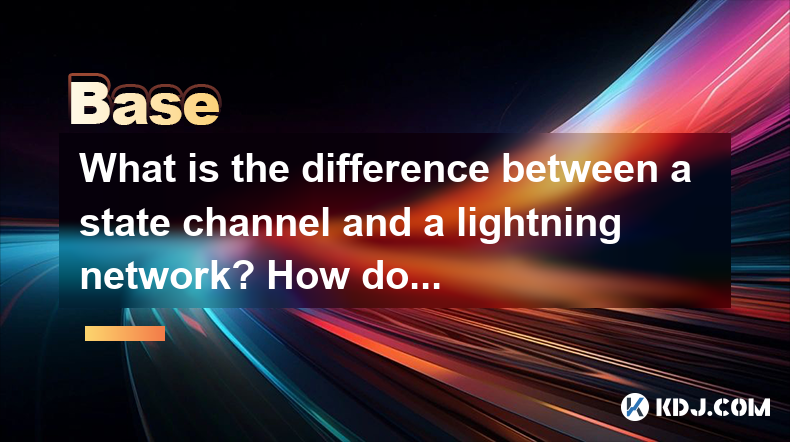
What is the difference between a state channel and a lightning network? How do they improve transaction efficiency?
Apr 05,2025 at 05:21pm
State channels and the Lightning Network are two significant technologies within the cryptocurrency ecosystem aimed at improving transaction efficiency on blockchain networks. Both solutions address the scalability issues of blockchain systems, particularly in handling a high volume of transactions quickly and with low fees. However, they operate differ...

Why is the oracle called the bridge between blockchain and the real world?
Apr 04,2025 at 04:00am
The concept of an oracle in the cryptocurrency and blockchain world is crucial for understanding how these decentralized systems interact with external data. The oracle is often referred to as the bridge between blockchain and the real world because it serves as a vital intermediary that fetches, verifies, and transmits off-chain data to the on-chain en...
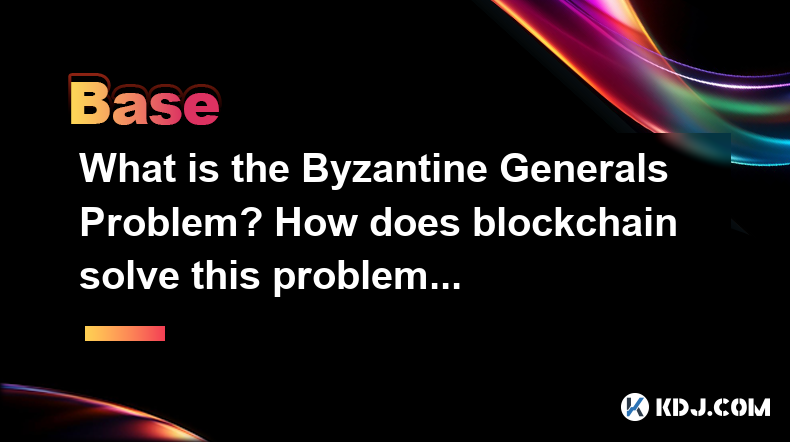
What is the Byzantine Generals Problem? How does blockchain solve this problem?
Apr 05,2025 at 06:29am
The Byzantine Generals Problem is a classic problem in the field of distributed computing and computer science, which has significant implications for the reliability and security of decentralized systems, including blockchain technology. This problem is named after a hypothetical scenario involving several generals of the Byzantine army who must coordi...

What role does the Merkle tree play in the blockchain? Why can it verify data integrity?
Apr 04,2025 at 01:29pm
The Merkle tree plays a crucial role in the blockchain, primarily due to its ability to efficiently and securely verify data integrity. This article will delve into the structure of a Merkle tree, its implementation in blockchain, and how it ensures the integrity of data. Understanding the Structure of a Merkle TreeA Merkle tree, also known as a hash tr...
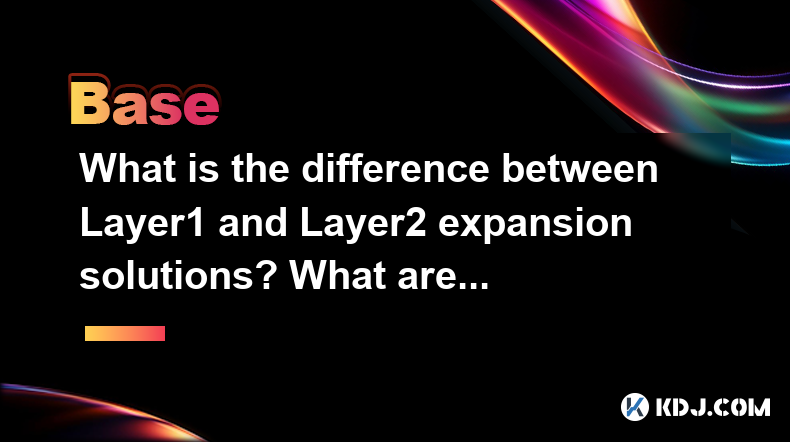
What is the difference between Layer1 and Layer2 expansion solutions? What are their advantages and disadvantages?
Apr 05,2025 at 12:49pm
In the world of cryptocurrencies and blockchain technology, scalability is a critical issue that developers and users alike grapple with. To address this, the industry has developed various solutions, primarily categorized into Layer1 and Layer2 expansion solutions. Understanding the differences between these two approaches, along with their respective ...
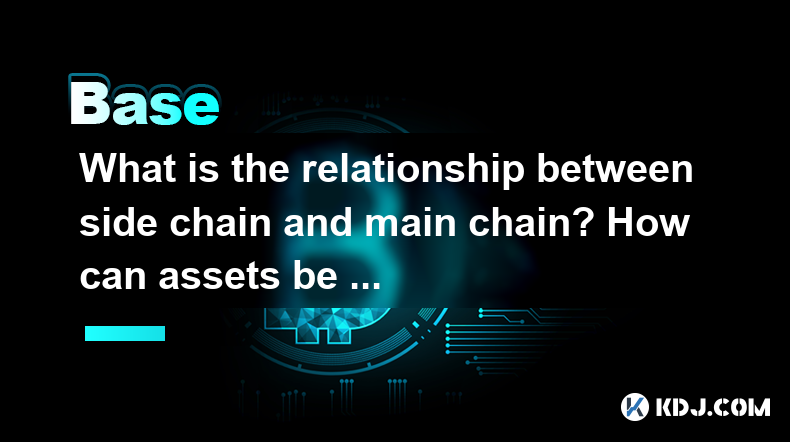
What is the relationship between side chain and main chain? How can assets be transferred between the two securely?
Apr 05,2025 at 07:00pm
The relationship between side chains and main chains is a fundamental concept in blockchain technology that enables enhanced scalability, privacy, and functionality. Side chains are separate blockchains that are linked to a main chain—typically a well-established blockchain like Bitcoin or Ethereum. This connection allows assets to be transferred betwee...

What is the difference between a state channel and a lightning network? How do they improve transaction efficiency?
Apr 05,2025 at 05:21pm
State channels and the Lightning Network are two significant technologies within the cryptocurrency ecosystem aimed at improving transaction efficiency on blockchain networks. Both solutions address the scalability issues of blockchain systems, particularly in handling a high volume of transactions quickly and with low fees. However, they operate differ...

Why is the oracle called the bridge between blockchain and the real world?
Apr 04,2025 at 04:00am
The concept of an oracle in the cryptocurrency and blockchain world is crucial for understanding how these decentralized systems interact with external data. The oracle is often referred to as the bridge between blockchain and the real world because it serves as a vital intermediary that fetches, verifies, and transmits off-chain data to the on-chain en...

What is the Byzantine Generals Problem? How does blockchain solve this problem?
Apr 05,2025 at 06:29am
The Byzantine Generals Problem is a classic problem in the field of distributed computing and computer science, which has significant implications for the reliability and security of decentralized systems, including blockchain technology. This problem is named after a hypothetical scenario involving several generals of the Byzantine army who must coordi...

What role does the Merkle tree play in the blockchain? Why can it verify data integrity?
Apr 04,2025 at 01:29pm
The Merkle tree plays a crucial role in the blockchain, primarily due to its ability to efficiently and securely verify data integrity. This article will delve into the structure of a Merkle tree, its implementation in blockchain, and how it ensures the integrity of data. Understanding the Structure of a Merkle TreeA Merkle tree, also known as a hash tr...

What is the difference between Layer1 and Layer2 expansion solutions? What are their advantages and disadvantages?
Apr 05,2025 at 12:49pm
In the world of cryptocurrencies and blockchain technology, scalability is a critical issue that developers and users alike grapple with. To address this, the industry has developed various solutions, primarily categorized into Layer1 and Layer2 expansion solutions. Understanding the differences between these two approaches, along with their respective ...

What is the relationship between side chain and main chain? How can assets be transferred between the two securely?
Apr 05,2025 at 07:00pm
The relationship between side chains and main chains is a fundamental concept in blockchain technology that enables enhanced scalability, privacy, and functionality. Side chains are separate blockchains that are linked to a main chain—typically a well-established blockchain like Bitcoin or Ethereum. This connection allows assets to be transferred betwee...
See all articles





















































































